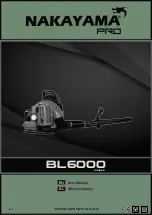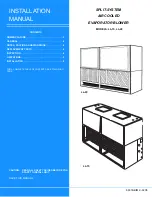
Operating instructions
K3G250-PR17-I5
Translation of the original operating instructions
2. PROPER USE
The device is exclusively designed as a built-in device for conveying
air according to its technical data.
Any other usage above and beyond this does not conform with the
intended purpose and constitutes misuse of the device.
Customer equipment must be capable of withstanding the mechanical
and thermal stresses that can arise from this product. This applies for the
entire service life of the equipment in which this product is installed.
Proper use also includes:
●
The device is only to be used in systems with earthed neutral (TN/TT
systems), in phase-to-earth systems or in IT systems.
●
Use of the device in stationary systems only.
●
Conveying of air at an ambient air pressure of 800 mbar to 1050 mbar.
●
Using the device in accordance with the permitted ambient
temperature, see chapter 3.6 Transport and storage conditions and
chapter 3.2 Nominal data.
●
Operating the device with all protective features in place.
●
Minding the operating instructions.
Improper use
Using the device in the following ways is particularly prohibited and
may cause hazards:
●
Operating the device with an imbalance, e.g. caused by dirt deposits
or icing.
●
Resonance mode, operation with heavy vibrations. These also
include vibrations that are transmitted from the customer system to the
fan.
●
Operation in medical equipment with a life-sustaining or lifesaving
function.
●
Moving solids content in flow medium.
●
Painting the device
●
Connections (e.g. screws) coming loose during operation.
●
Opening the terminal box during operation.
●
Moving air that contains abrasive particles.
●
Moving highly corrosive air, e.g. salt spray mist. Exceptions are
devices that are intended for salt spray mist and protected accordingly.
●
Moving air that contains dust pollution, e.g. suctioning off saw dust.
●
Operating the device close to flammable materials or components.
●
Operating the device in an explosive atmosphere.
●
Using the device as a safety component or for taking on safety-
related functions.
●
Operation with completely or partially disassembled or modified
protective features.
●
In addition, all application options that are not listed under proper use.
Item no. 54783-5-9970 · ENG · Revision 202174 · Release 2018-12-28 · Page 3 / 12
ebm-papst Mulfingen GmbH & Co. KG · Bachmühle 2 · D-74673 Mulfingen · Phone +49 (0) 7938 81-0 · Fax +49 (0) 7938 81-110 · [email protected] · www.ebmpapst.com






























